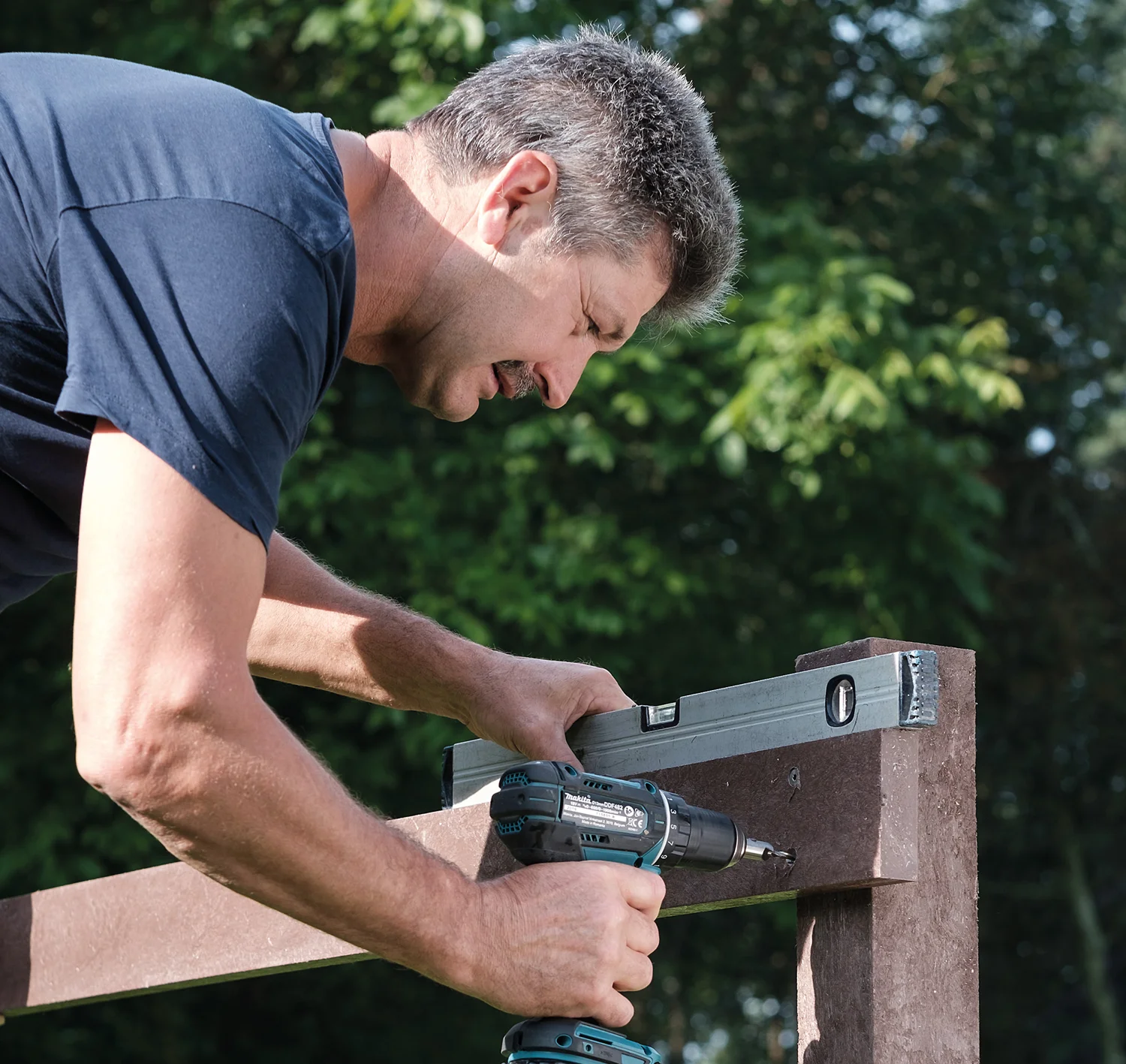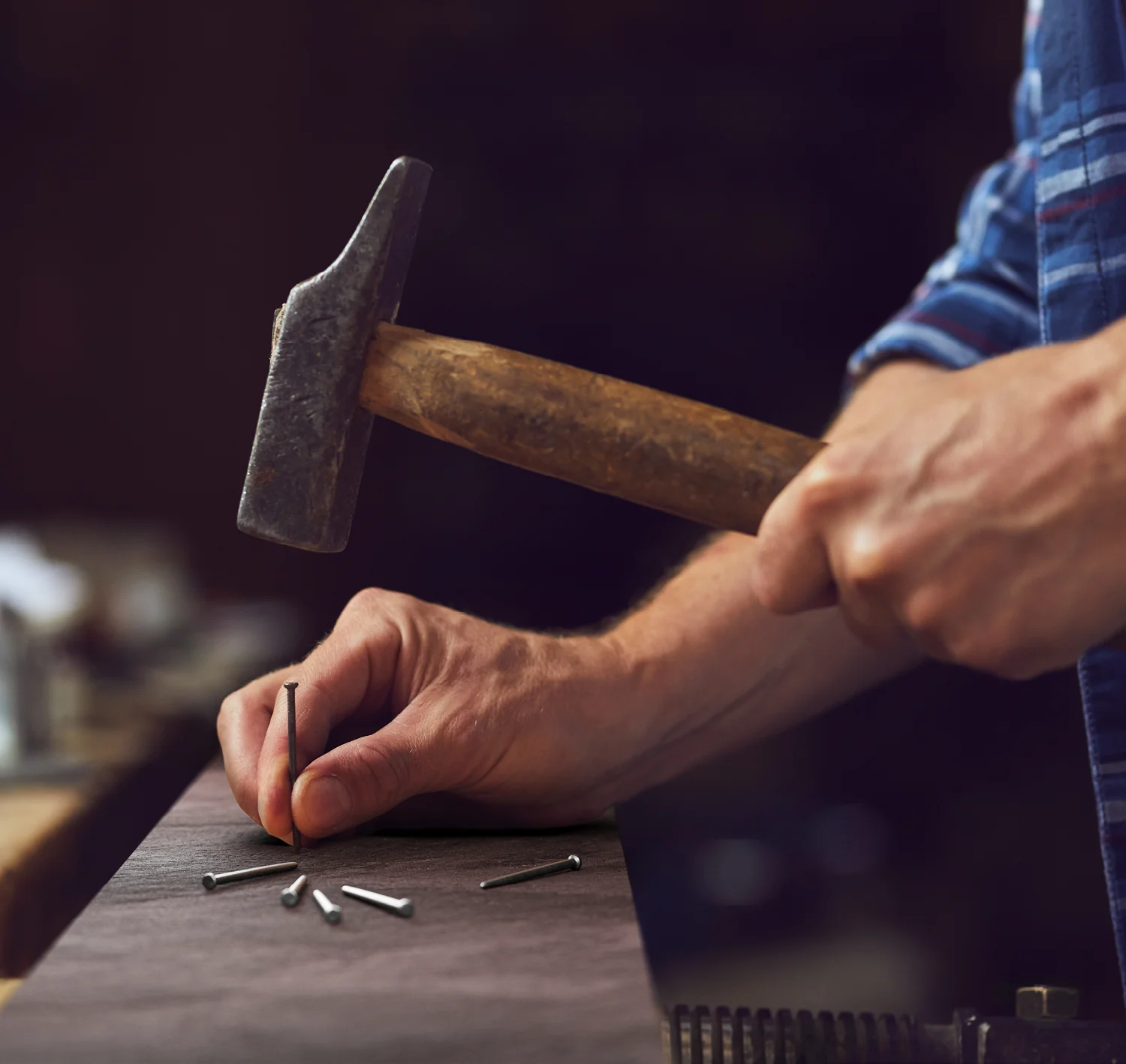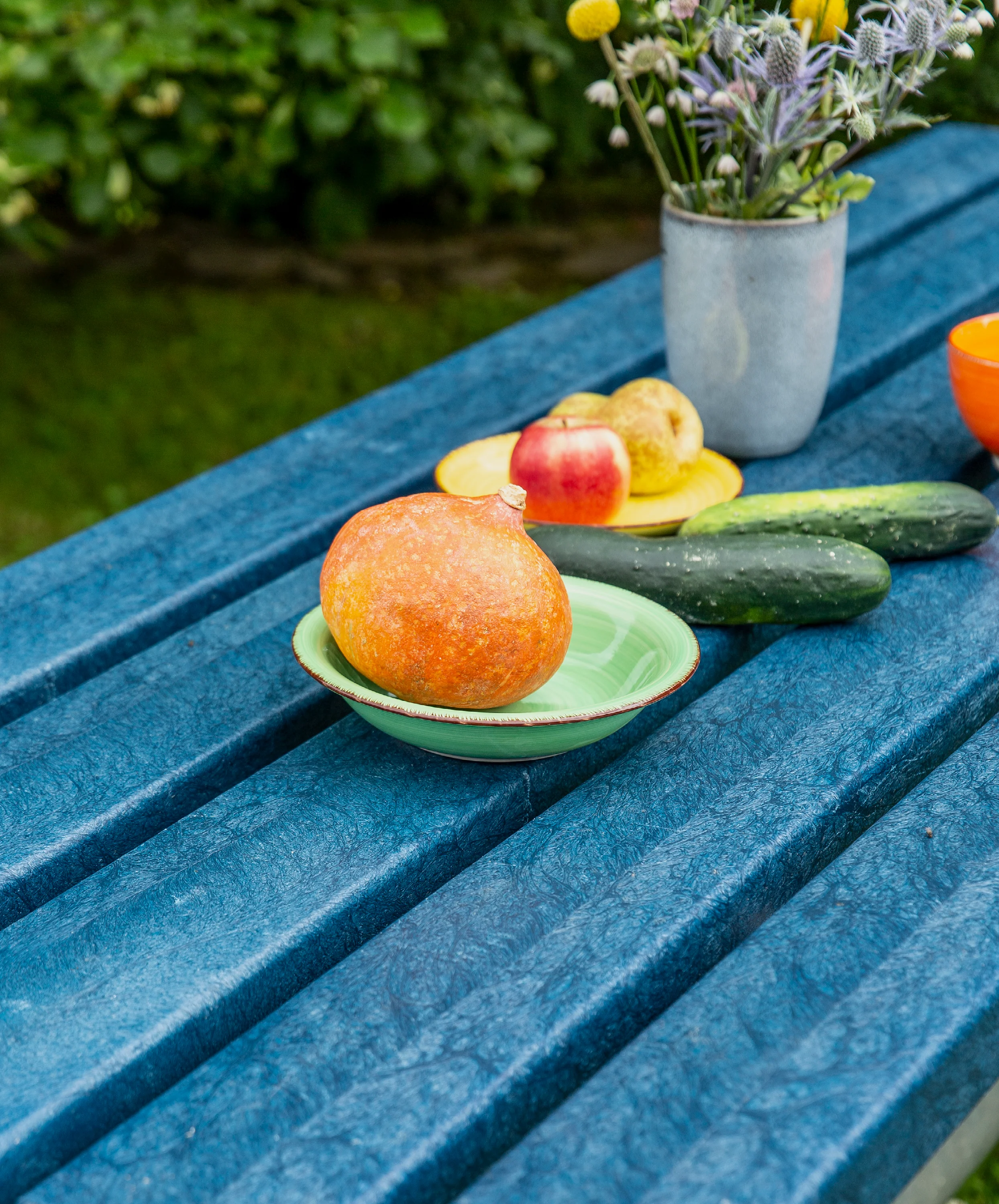
PROCESSING INSTRUCTIONS
Tips & Tricks for Working with hanit
Our environmentally friendly hanit material consists of 100% recycled plastic and is characterized by its wide range of uses. Products made from hanit can be easily installed without a great deal of technical knowledge, are easy to transport, and protect our climate by reducing the amount of new material used. In addition to being environmentally friendly, it is the outstanding product performance which makes the material unique, since hanit combines the positive characteristics of wood, stone, plastic and concrete. It also has a very good price/performance ratio and quickly pays for itself.
SPECIAL FEATURES OF RECYCLED PLASTIC
hanit is just as easy to process as wood and can be machined using standard tools and machinery from the wood and metal processing industries. Our products made from recycled plastic can be adapted to almost project. Because of the material characteristics, there are a few things which should be taken into consideration before processing hanit:
- Recycled products have a closed surface. The core has structure that becomes visible during machining. This material-related characteristic does not affect the processing or stability of the material.
- hanit is much lighter than concrete or stone but it is very dense, which gives the material its strength and makes it a popular alternative with many professionals.
- The processing of recycled plastic normally results in additional tool wear. We recommend the using carbide for processing hanit.
- Several hanit products have steel reinforcement which gives the product additional stability. Do not cut the steel reinforcement.
- Chips can occur during the machining of recycled plastic, as they do with wood. These should be collected using appropriate extraction systems or devices so that they can be recycled or disposed of afterwards.
DOWNLOAD AREA
More information about the installation, assembly, and processing of hanit recycled products can be found in the downloads tab. These documents will provide step-by-step support for correct usage. And we are always pleased to be available to you in person for any other questions.
TOOL SELECTION
Working with hanit

SAWING
Optimum cutting can be achieved by recycled plastic using fast band saws and circular saws with slightly straight-set teeth made from carbide. To avoid clogging the recycling plastic, we recommend quick swarf removal.
SCREW FASTENING
When hanit recycled products are being screwed in place, the profile that is being secured such as boards, decking or square profiles should be pre-drilled. The drill hole should be bigger than the screw. We also recommend elongated holes to allow for expansion and contraction of the material.


MILLING
When milling hanit products, a swarf cross-section that is as big as possible should be selected in order to minimize the amount of heat generated by the swarf removal. The maximum cutting depth and the feed rate should be used, whereas the cutting speed should be slow. To increase the service life of the tools, we recommend using milling cutters made from carbide.
NAILING
Hammers and nails or nail guns can be used on hanit recycled plastic. Because of the density of plastic, nailing into hanit products is more difficult than wood.


DRILLING
A standard drill with a twist angle of 20 to 30° and a tip angle of 110 to 120° can be used in the majority of cases when drilling recycled plastic. Relaxation strokes should occasionally be used to avoid high frictional heat, particularly at greater drilling depths.
SPAN DISTANCES
Recycled plastic is less rigid and more flexible than wood or metal products. This material characteristic should be taken into consideration, particularly in boardwalk, fence, and deck construction.


PLANING
An electric planer can be used to machine hanit. The surface depends on the feed rate, cutting speed, clearance, rake angle, and the condition of the blades to a considerable extent.
POST POUNDING
If recycled profiles are being pounding in, we recommend using a pile driver or edge protector to avoid damage the product.


DEBURRING
Angle grinders are not suitable for cutting hanit because of the high rotational speed, however, it can be used on plastic parts which have burrs or edges after machining.
EXPANSION DISTANCE
Boards, beams and square profiles made from hanit recycled plastic must not be press fitted. rofiles will experience thermal expansion of +/- 1.5 %. An expansion gap must be left to accommodate thermal expansion.

COLOR WORLDS
hanit can also be colored
In addition to the standard color of gray, many hanit products are also available in anthracite, brown, red or blue. This isn’t so easy because of the colourful mixture of materials and colours from post consumer plastics. The pellets which are produced during recycling are always grey. We can color hanit by adding coloured granulate. The material is coloured all the way through, not just surface treated.
Products made from hanit recycled plastic can have slight color and appearance fluctuations. Color differences tend to occur more frequently with grey products, to which not colorant is added.
hanit is characterized by having muted coloring. This underlines the natural character of the products. The colors and therefore the products can become somewhat lighter over time. This is a natural process which does not affect the functionality of the products.



